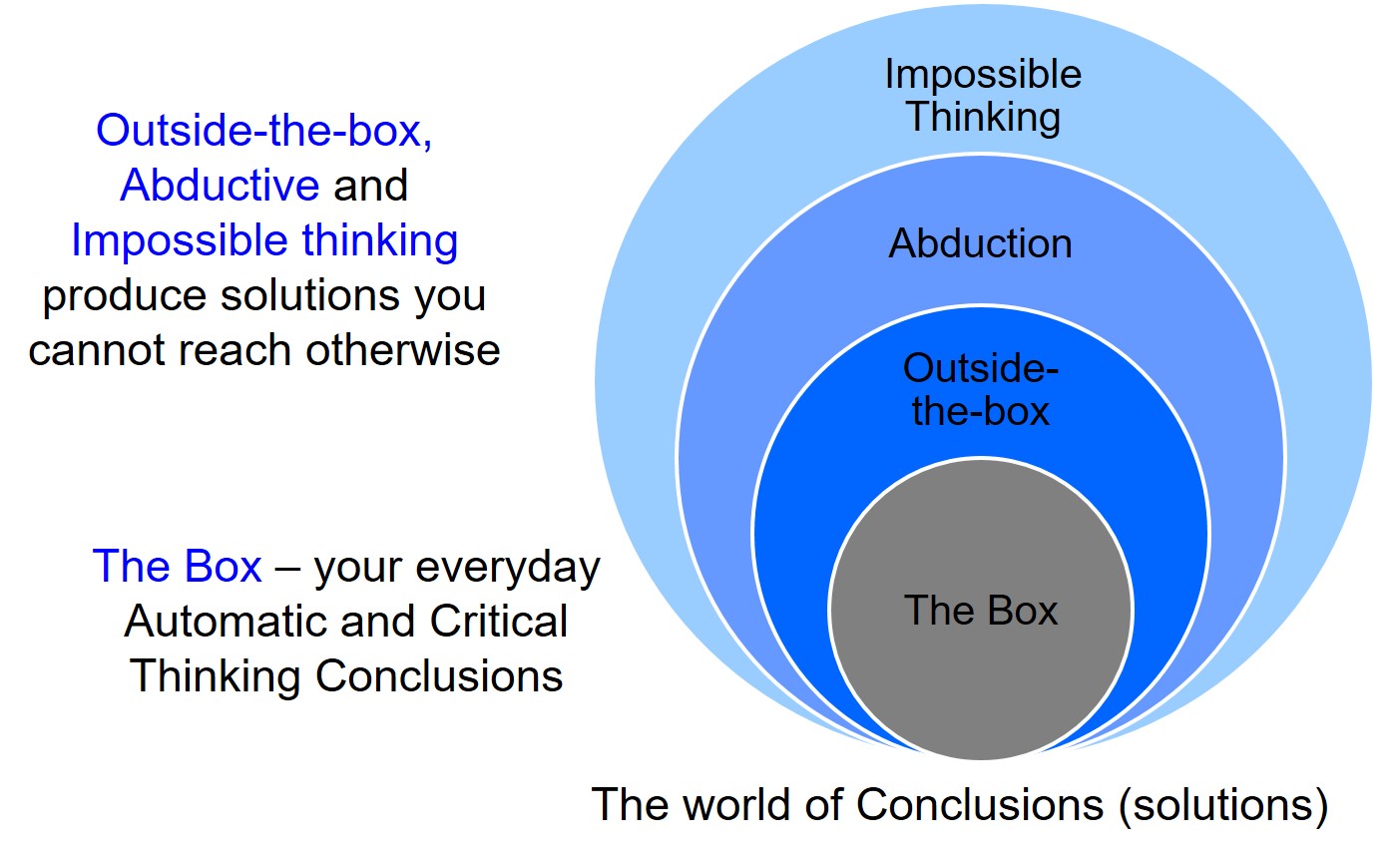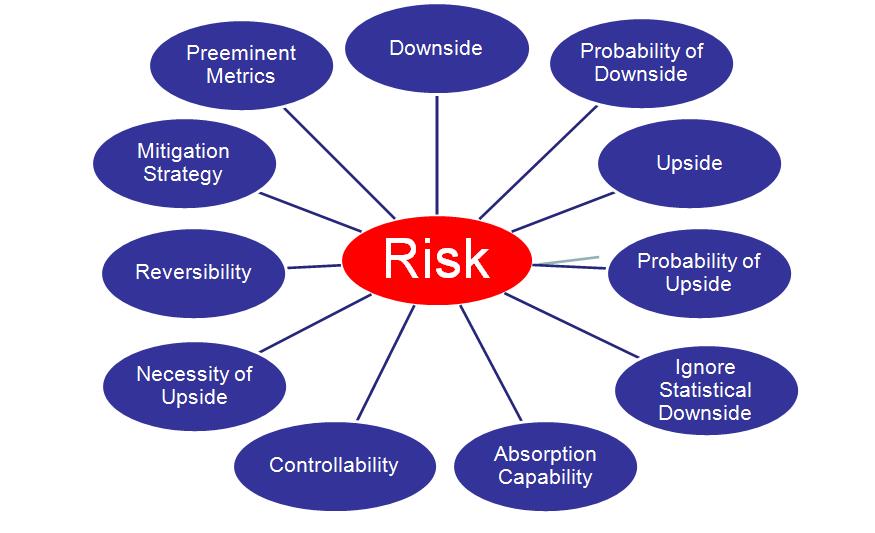Using concepts from our model we created a simple framework for Critical Thinking
We contrast your everyday automatic thinking with Critical Thinking.
Decisions
Conclusions
Clarity
Critical Thinking
Stronger foundation for decisions
More time on getting clear and less time and rework needed for decisions
Clarity
Clarity
Conclusions
Decisions
Conclusions
Decisions
Automatic Thinking
Focus
People, Time and Money spent
on the right problem
Clarity of issue and decision to be made
Thoughtful,
Defendable and Clear Conclusions
New ideas
Skills to influence and Guide Others
Alternatives
Solid Conclusions
Successful Decisions
Fewer iterations and redo's
Crisp, Decisive, Defendable Decisions
Alignment
Enrollment
Risk Mitigation
Faster and Quality
Decision Making
Weaker foundation for decisions
Less time on getting clear and more time and rework needed for decisions
This Results in ...
What's the benefit of Critical Thinking
Attendees learn Pragmatic Critical Thinking Techniques resulting in;
• Faster and higher quality decisions that are more likely to be the correct ones.
• Superior solutions to problems, goals, and strategies.
• Better understanding of the dynamics between different aspects of a business or project
• Innovative ideas and solution
• Higher productivity
• Being better equipped to tackle problems and make decisions on a daily basis.
Critical Thinking skills gained can be applied to:
• General problem solving and decision making
• New product ideas and creation
• Short and long term business strategies
• Improved development processes and quality
• Improved operational efficiency
• Crisis Management
• Revenue generation and cost reduction strategies
• Customer care improvement
What's unique about our workshop?
This isn't your ordinary "academic" day. It's not just "theory", but pragmatic, proven techniques for solving real world business problems, strategies and challenges.
Virtual Live Version - Critical Thinking
For Problem Solving and Decision Making
Course #751 - The Online version of our most popular workshop
From your computer or mobile device
Get Clear
Empty Bucket
Inspection
Need
Why?
So What?
Anticipatory Thinking
Reach
Conclusions
Facts
Observations
Experiences
Beliefs
Assumptions
Credibility / Consistency
Influencing
Change
Presenting / Defending
Abduction
Outside-the-Box
Impossible
Triangular Thinking
We present a set of core tools and exercises combined with those from our advanced and innovation workshops to create solutions and just as important, to present them with credibility.
Decisions
Who
When
Need
Risk
Criteria
Advanced Decision Making incorporates a Risk Model
Overview
We took our most popular instructor led workshop and restructured it for a dynamic and engaging learning experience Online. The participant will view videos, and download PDF forms with exercises and reference material that we've perfected after teaching this course for 15 years in front of thousands, with hundreds of workshops. This Online course isn't a power point with talking in the background. While the content is the same as the instructor led course, the presentation and flow of the Online course is very different. It's designed to go at your own pace, taken over days or weeks or even months.
The course objectives include:
• Be a Thinking Coach
• Distinguish “Automatic” Thinking from “Manual”
• Understand a Framework for Thinking Critically and apply the 3 step Critical Thinking Process
• Learn and practice a variety of tools to think critically including the use of Thinksheets to:
• Get Clear on a Problem, Situation or Goal
• Guide your thinking for Conclusions
• Guide your thinking for Decisions
• Be able to identify the “box” that constrains your current thinking and think outside of it.
• Think through 11 risk factors and how they weigh in
• Leave the course knowing how to ask questions to get yourself and others to think critically
• Identify where you can apply Critical Thinking in your job and create a next steps plan
Topics Covered:
• Distinguishing “Automatic” Thinking from “Manual Thinking”
• Benefits of Critical Thinking
• Empty your bucket
•
Clarity
- “Get Clear” on a problem to solve or decision to make, and the Clarity Thinksheet
• Inspecting the problem statement
• The tools of Socratic Questioning; Why, So What, Anticipatory Thinking
• Need vs. Want
•
Conclusions
- Create Solutions and the Conclusion Thinksheet
• Applying Inductive & Deductive thinking.
• Understanding the Premise that leads to a conclusion and how personality affects this.
• How facts, assumptions, experiences, beliefs, and observations affect your thinking
• Why people come to different conclusions and what to do about it.
• Credibility and Consistency - Increasing the strength of your premise
• Triangular Thinking – When you can’t know exactly
• Using Critical Thinking to Influence and Persuade
•
Innovation
- Creating an environment and stimulating creativity and innovation
• Thinking Outside-the-Box - Challenging the Premise (What if?, What other?)
• Abductive Thinking - Thinking beyond your experience
• Impossible Thinking -To generate Breakthrough ideas
•
Decisions
- Taking action and the Decision Thinksheet
• The Elements of Decision; Who, When and Criteria
• Preeminent Metrics – What can be measured that can act as an early warning system and
gives you the time to change direction and the outcome
• Risk Criteria – A 11-point Risk model that helps you evaluate the risk and your personal
risk level w/exercises (Downsides, Downside Probability, Upside, Upside Probability,
Downside, Absorption Capability, Ignoring Statistical Downside, Controllability,
Necessity of Upside,
Reversibility, Mitigation, Strategy, Preeminent Metrics)
• Fuzzy Criteria – Not all the criteria of a decision are black and white. This topic looks at
the grey ones
•
Thinking Coach
• Jobs Description
• Rules
• Next Steps - Your plan to implement your learning (for yourself and your team)

Virtual Live
Version of our most popular Critical Thinking Workshop
Fill in our ContactUs form for more information
Using concepts from our model we created a simple framework for Critical Thinking











